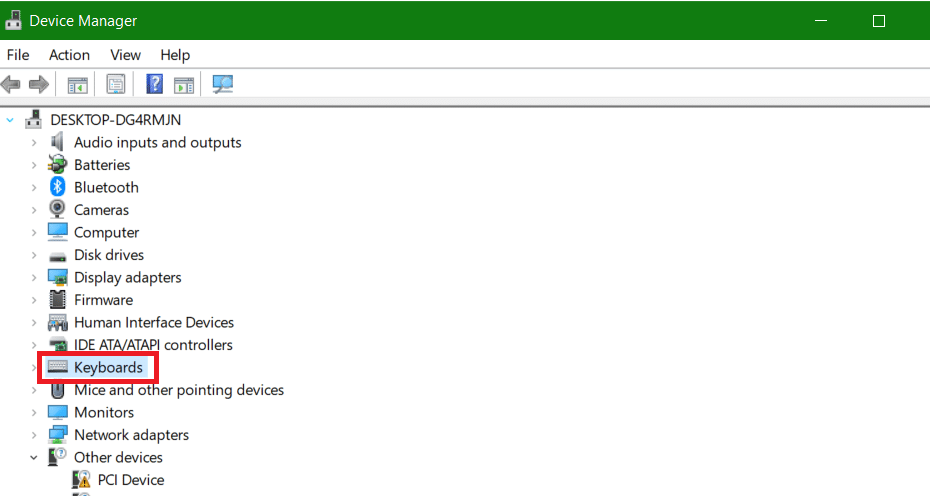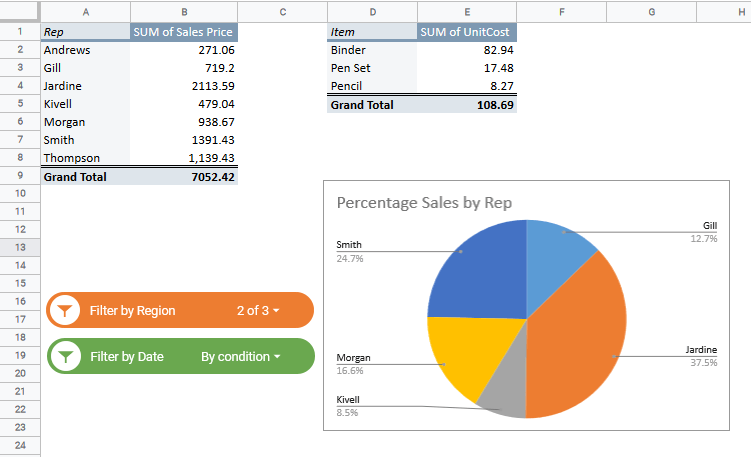Are you wondering how to indent in Google Sheets? The easiest way to add indents to Google Sheets is by manually adding spaces into your cells. However, there are a few more definitive ways to do it. In this guide, I’ll show you how to indent in Google Sheets by:
- Using manual spaces
- Adjusting column width
- Using custom number format
Read on for a detailed guide on how to do each method.
This Article Covers:
How To Add Indent in Google Sheets
Below, I’ll share my step-by-step guide on how to add an indent in Google Sheets. This is a little more complicated than adding these types of spaces in Google Docs or Microsoft Word. Because it’s spreadsheet software, you’ll need to work around the system to add indentations.
Manually Inputting Spaces to Indent Text Google Sheets
In my opinion, the easiest way to add indents to texts is by manual input. I prefer this method when dealing with a relatively small number of entries that require indenting because it is time-efficient and makes the process go smoothly.
Follow the simple steps below to learn how to indent cells in Google Sheets manually:
- Open the spreadsheet with the data to indent in Google Sheets. Here, click on the cell with the text to indent.
- I recommend starting from the last data type in your list for this step.
- For example, I have three types of data: Category, Subcategory, and Item.
- The Item category is the last element in the hierarchy, so I will start there.

- Now, with the cell selected, move your mouse cursor to the left-most part of the textbox and press the Space button to add multiple spaces based on your need.
- In this example, I added 8 spaces.
- If you have multiple instances of the same element, repeat the second step to add the spaces for all elements.
- Repeat the process to add spaces for all data types in your spreadsheet.
- In the example above, I added 4 spaces to Subcategory 1 to add a smaller indent.
Related: 3 Simple Ways to Add Bullet Points in Google Sheets
How To Indent Text in Google Sheets by Adjusting Column Width
Although the first method is great when handling small amounts of data, the manual method can be tedious and time-consuming, especially when you have a lot of data. Therefore, in such cases, I would use this second method, which allows you to simultaneously indent every data type in the hierarchy.
However, you must move each category to a separate column to use this method. I’ll explain this using the data from the previous example. Here is how to indent on Google Sheets by adjusting column width:

- Open the spreadsheet with the data to indent in Google Sheets.
- I input the text into the desired cells by creating layers for each data type.
- For this example, I have the Category element in the left margin column, the Subcategory in the middle column, and the Item in the rightmost column.

- Now, to indent cells in Google Sheets, I will change the column width of column B, which will create indent markers for the Subcategory.

- I then repeat the previous step and change the width of column C to create a Google Sheets indent within the cell for Item.
- If the text is clipped, you may need to change the formatting of the cells by highlighting them and clicking “Format” > “Wrapping” > “Overflow.”
The best part about using this method to create indentation is that I can decrease or increase indent Google Sheets by adjusting the column width. Also, this method does not change or wrap text within the cells, so I can use the data in mathematical calculations without affecting the output or readability.
To remove the indentation, reset the size of the columns containing the indented data.
Related: 101 Google Sheets Shortcuts for Your Keyboard
How To Indent in Google Sheets Within a Cell Using Custom Number Format
This is another great way to add an indent without changing the column width. Instead, you change the number format, which displays your data more clearly.
Here is how to indent in Google Sheets by changing the number format via the menu bar:
- Open the spreadsheet with the data to indent in Google Sheets.
- If I have multiple cells and I want to add the indent, I will hold the Ctrl key on my keyboard and click on the cells.
- The selected cells will be indicated using a blue highlight.

- Now, I will click the “Format” button, which opens a drop-down menu.
- I click the “Number” button and then on “Custom number format.”

- I can customize my format in the “Custom number format” window.
- For the Item elements, I want there to be an eight-space wide indent.
- To do this, I’ll press the Space key eight times.
- To finalize, I will add an at symbol (@).
- Finally, I click the “Apply” button to add an indent to the selected cells.
Feel free to repeat the steps to add a custom indent to the other cells in your spreadsheet.
To remove the indent, select the cells or the entire spreadsheet using the Ctrl+A keyboard shortcut. Click on “Format” > “Number” > “Automatic.”
To learn more about using Google Sheets to improve your reporting with formula combinations, check out this masterclass in Reporting Automation with Google Sheets. You’ll cover how to automate business forecasting by combining Google Sheets with Python scripts and more!
What Does Indent in Google Sheets Mean?
Indentation in text means adding a whitespace before the text to clarify which item is categorized in a chunk or group in a data set.
For example, let’s say I have a spreadsheet with the subject names and the enrolled students for the subject. Adding indentation levels allows me to create a hierarchy, which allows me to identify the data more easily. In this case, the subject is the main category, and the student names are indented, which makes it easier to follow and understand the subsequent lines or the data structure.
The visual cues also help me spot the relationship between the different items in the spreadsheet, an invaluable tool to maintain clarity and keep my work organized.
However, there is no indentation Google Sheets function, meaning there’s no specific =INDENT() style argument to use. That only leaves workarounds to add an indent to my spreadsheet. Unfortunately, it also means pressing the Tab key won’t add an indent, unlike other Google workspace applications like Docs or Slides.
Related: Format Painter in Google Sheets (Copy formatting easily)
Frequently Asked Questions
Before I wrap up, let’s talk about a few of the most common questions that come up around this topic.
Can You Indent in Google Sheets?
Google Sheets does not allow users to add indent to cells like you can in Google Docs or Slides. However, there are several workarounds that you can use, such as using a custom number format or changing the cell alignment. I’ve covered these above.
How to Indent in Google Sheets on Mac?
To add a left or right indent on Mac, you can use the same steps as the Microsoft Word Windows version. Follow the steps below:
- Select the cells and click on the “Format” button.
- Select “Number”
- Choose the “Custom number format” option
- Add your desired number of spaces and an at symbol (@) at the end.
Can I Use Tab Within a Cell to Indent in Google Sheets?
No, you cannot use the Tab key to make indents in Google Sheets. Using the tab button takes you to the next cell in the row. It doesn’t add spaces to a cell. Instead, you can add spaces manually or use one of the abovementioned methods.
Is There a Keyboard Shortcut to Indent Text in Google Sheets?
When writing this article, there was no keyboard shortcut for indenting text.
Wrapping Up
I wish Google would just let you use the tab button to add an indent in Google Sheets. In the meantime, I discussed the three easiest ways to do it. There’s no existing shortcut for a tab, but you can still do it in a few seconds with extra columns, the addition of spaces, or by changing formatting with the custom number format dropdown menu. I hope you found this helpful. Please let me know if you have any questions in the comments below!
Related:






